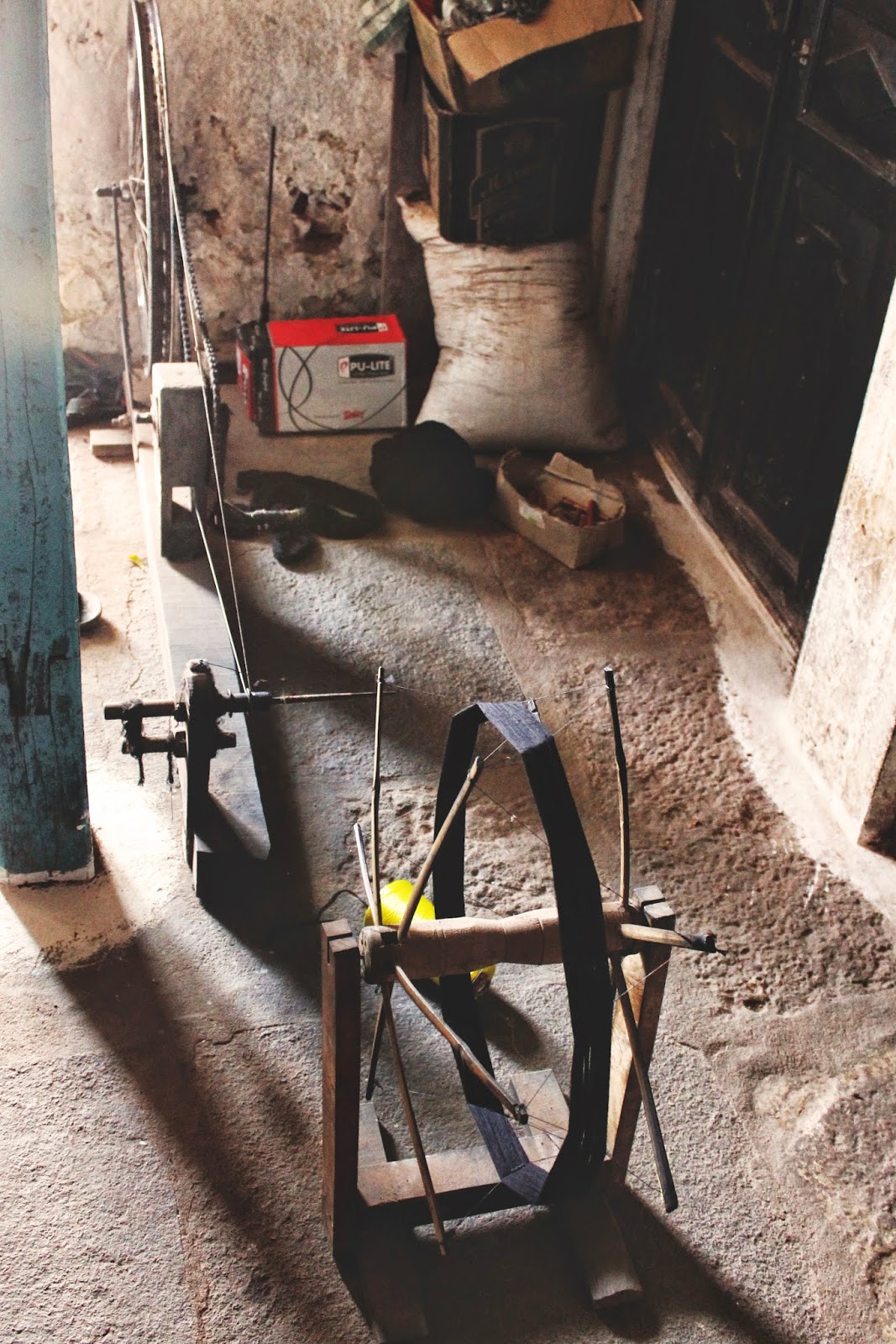 |
| Black cotton threads being made ready for the loom |
 |
| Silk yarns which are used for the borders |
Pure silk threads which are later wrapped in spools
 |
| Pit loom at the weaver's house |
 |
| Traditional Ilkal checks weave in cotton and silk yarns |
The first visit to Ameengad, Ilkal, was truly an eye opener. In a small town in Bagalkote district, Karnataka, lies the history of handwovens.
The main occupation of the villagers is weaving. Every house has a loom and the
family works around it. From the elders of the house to the young kids, all are
seen providing a helping hand in the process of weaving. The living room itself is their work place. You can see a bunch of wooden sticks at the entrance, bright and rich-coloured silk yarns scattered and strewn all over, children playing with spools of yarns. The result: yards of beautiful handwoven fabric with silk
and cotton threads. Available in traditional rich colours with variants of four
borders, the checks pattern, with two or more colours mark the Ilkal weaves.
Mostly worn as a saree in North Karnataka it is also passed on to the new bride
in the family as heritage. Ilkal weaves are restricted to sarees in North
Karnataka. With polyester sarees now available for lesser price, the weavers are at the brink of extinction. The younger generation is moving to the
city as there is dearth for weaving jobs, and threat from
power looms. Dori is a small effort to keep this beautiful art from dying. It is time our young generation was aware about the rich heritage we have behind us.





